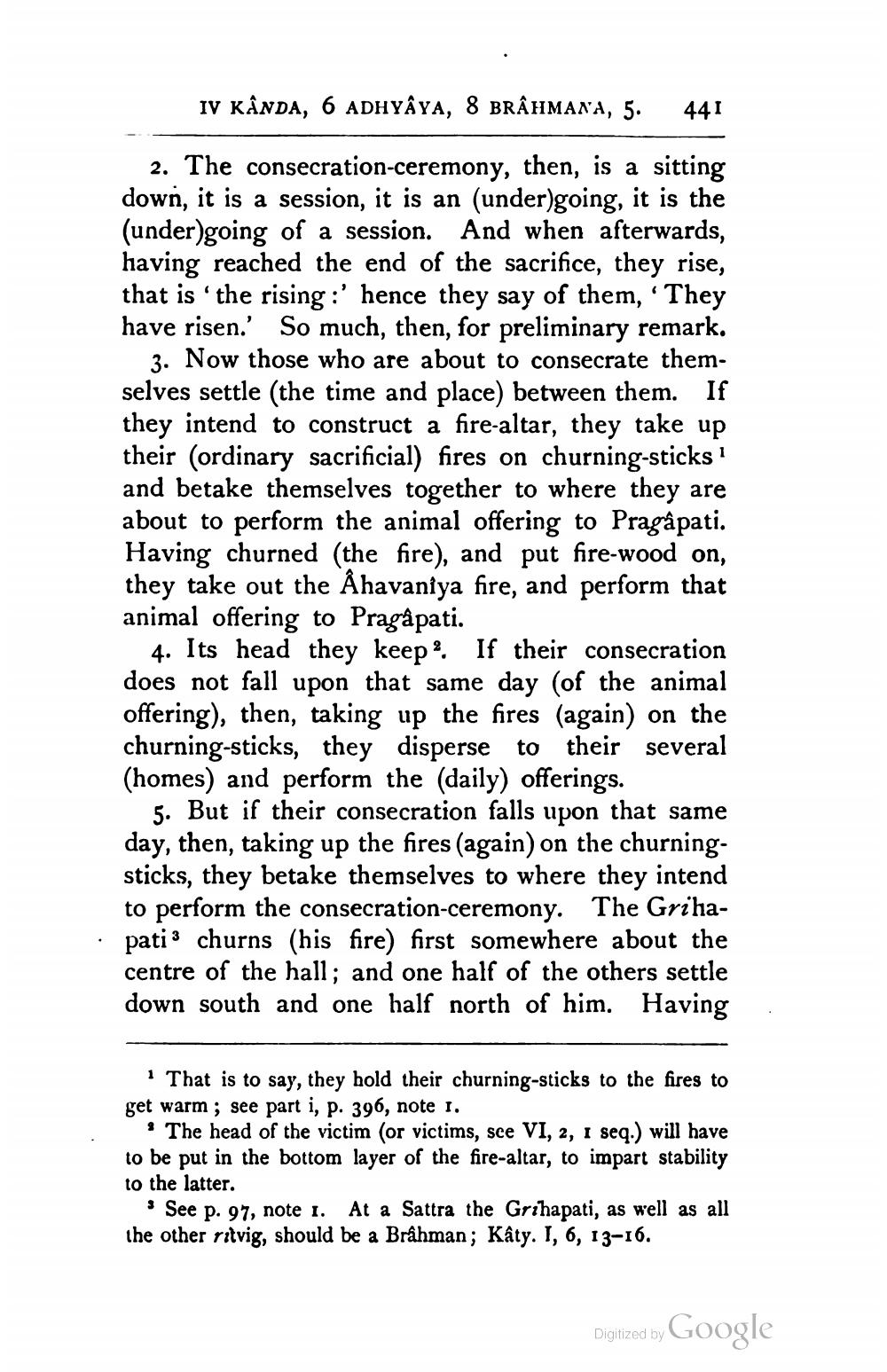________________
IV KÄNDA, 6 ADHYAYA, 8 BRÂHMANA, 5.
441
2. The consecration-ceremony, then, is a sitting down, it is a session, it is an (under)going, it is the (under)going of a session. And when afterwards, having reached the end of the sacrifice, they rise, that is the rising :' hence they say of them, 'They have risen.' So much, then, for preliminary remark.
3. Now those who are about to consecrate themselves settle (the time and place) between them. If they intend to construct a fire-altar, they take up their (ordinary sacrificial) fires on churning-sticks! and betake themselves together to where they are about to perform the animal offering to Pragâpati. Having churned (the fire), and put fire-wood on, they take out the Åhavaniya fire, and perform that animal offering to Pragàpati.
4. Its head they keep?. If their consecration does not fall upon that same day (of the animal offering), then, taking up the fires (again) on the churning-sticks, they disperse to their several (homes) and perform the (daily) offerings.
5. But if their consecration falls upon that same day, then, taking up the fires (again) on the churningsticks, they betake themselves to where they intend to perform the consecration-ceremony. The Grihapatis churns (his fire) first somewhere about the centre of the hall; and one half of the others settle down south and one half north of him. Having
· That is to say, they hold their churning-sticks to the fires to get warm ; see part i, p. 396, note 1.
* The head of the victim (or victims, sce VI, 2, I seq.) will have to be put in the bottom layer of the fire-altar, to impart stability to the latter.
* See p. 97, note 1. At a Sattra the Grihapati, as well as all the other ritvig, should be a Brâhman; Kâty. I, 6, 13-16.
Digitized by Google




